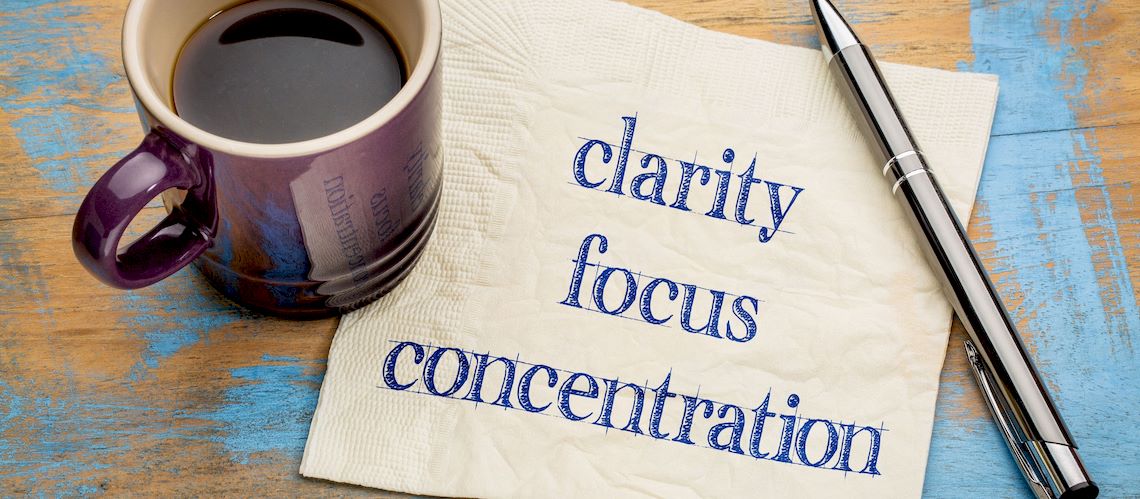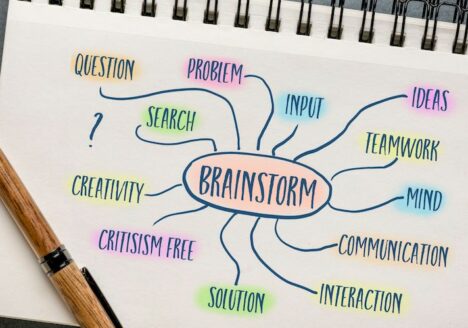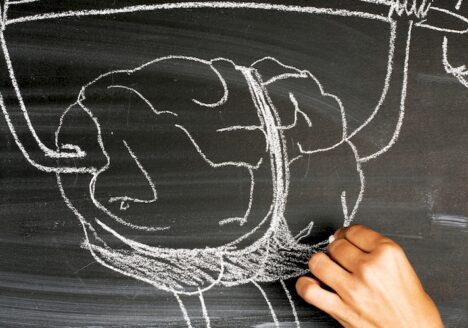Mihaly Csikszentmihalyi, a pioneer in positive psychology, introduced the concept of “flow,” a state of deep immersion and optimal experience where individuals are fully absorbed in an activity, leading to heightened creativity, productivity, and satisfaction. The principles of flow are instrumental in understanding and maximizing human potential. Insights from “Stealing Fire” by Steven Kotler and Jamie Wheal further expand our understanding of flow, its neurobiological underpinnings, and its practical applications. Integrating the principles of flow within the Self Matrix Framework offers a comprehensive approach to enhancing the spiritual, physical, and cognitive dimensions of the self.
Cognitive Self
Conscious Mind
- Flow State: The flow state is characterized by complete immersion, focused attention, and a sense of timelessness. Achieving flow involves balancing the challenge of a task with the individual’s skill level, creating an optimal environment for cognitive growth and peak performance.
- Application:
- Task Engagement: Identifying activities that appropriately challenge skills to foster deep engagement and concentration. Research shows that the balance between challenge and skill is crucial for achieving flow (Csikszentmihalyi, 1990).
- Mindfulness Practices: Incorporating mindfulness and meditation techniques to enhance focus, reduce distractions, and facilitate the flow state. Mindfulness has been linked to greater attention and reduced mind-wandering, both of which are important for entering flow (Lutz et al., 2008).
- Feedback and Goals: Setting clear goals and providing immediate feedback to maintain engagement and motivation. Clear goals and feedback loops are essential components of the flow experience (Csikszentmihalyi, 1990).
- Key Insight from “Stealing Fire”: Kotler and Wheal emphasize the importance of neurochemistry in achieving flow. Neurotransmitters like dopamine, norepinephrine, and endorphins play crucial roles in facilitating focus, motivation, and pleasure during flow states (Kotler & Wheal, 2017).
- Application:
Memory and Learning
- Enhanced Learning: In the flow state, individuals often experience accelerated learning and improved memory retention. This heightened cognitive state allows for deeper absorption and integration of information.
- Application:
- Active Learning: Engaging in active learning techniques that promote full immersion and focus, such as hands-on projects, problem-solving tasks, and experiential learning. Active learning is shown to increase engagement and retention (Prince, 2004).
- Flow-Inducing Environments: Creating environments conducive to flow, such as quiet, well-organized spaces free from interruptions, and using tools like immersive simulations and gamified learning platforms. The environment plays a critical role in facilitating flow by minimizing distractions (Csikszentmihalyi, 1990).
- Key Insight from “Stealing Fire”: The book highlights the concept of “ecstasis,” a state of heightened awareness and transcendence that can enhance cognitive capabilities and learning efficiency (Kotler & Wheal, 2017).
- Application:
Physical Self
Health and Wellness
- Physical Performance: Flow states are not limited to cognitive activities but also apply to physical endeavors. Athletes and performers often enter flow during peak performance, leading to enhanced physical capabilities, endurance, and precision.
- Application:
- Physical Activity: Engaging in physical activities that challenge and match skills, such as sports, dance, martial arts, and adventure sports like rock climbing and surfing. Flow has been documented in athletes who perform at high levels of physical and mental challenge (Jackson & Csikszentmihalyi, 1999).
- Routine and Rituals: Establishing pre-performance routines and rituals that help induce flow during physical activities, such as warm-ups, visualization techniques, and breathing exercises. Rituals help create a mental state conducive to flow (Csikszentmihalyi, 1990).
- Key Insight from “Stealing Fire”: The book discusses how extreme sports athletes harness flow states to push physical and mental limits, utilizing the neurochemical changes induced by flow to enhance performance and resilience (Kotler & Wheal, 2017).
- Application:
Body Awareness
- Mind-Body Connection: Achieving flow requires a strong connection between the mind and body. This connection enhances physical awareness, coordination, and overall well-being, crucial for tasks requiring fine motor skills and precision.
- Application:
- Mind-Body Practices: Incorporating practices like yoga, Tai Chi, Pilates, and Qigong to enhance the connection between mind and body, promoting balance, flexibility, and mindfulness. These practices are known to improve body awareness and coordination (Wayne & Kaptchuk, 2008).
- Kinesthetic Learning: Utilizing kinesthetic learning techniques that involve movement and physical activity to reinforce learning and skill development. Physical activity is linked to improved cognitive function and learning (Ratey & Loehr, 2011).
- Key Insight from “Stealing Fire”: Kotler and Wheal emphasize the role of proprioception (awareness of body position and movement) in achieving flow, highlighting its importance in activities requiring physical precision and coordination (Kotler & Wheal, 2017).
- Application:
Spiritual Self
Inner Peace and Fulfillment
- Intrinsic Motivation: Flow is driven by intrinsic motivation, where individuals engage in activities for the sheer joy and satisfaction they provide. This aligns with the pursuit of inner peace and fulfillment, as individuals find deeper meaning and satisfaction in their endeavors.
- Application:
- Passion Projects: Encouraging the pursuit of passion projects and hobbies that foster intrinsic motivation and joy, such as creative arts, music, writing, and gardening. Passion-driven activities are closely associated with flow (Csikszentmihalyi, 1990).
- Self-Reflection: Engaging in self-reflection practices to identify activities that naturally induce flow and align with personal values and passions. Reflection helps identify areas of intrinsic interest that can lead to flow (Ryan & Deci, 2000).
- Key Insight from “Stealing Fire”: The book explores how achieving flow can lead to a sense of purpose and fulfillment, enhancing overall life satisfaction and well-being (Kotler & Wheal, 2017).
- Application:
Transcendence
- Experiences of Awe: Flow can lead to transcendental experiences where individuals feel a sense of unity and connection with something greater than themselves. This state often results in profound insights, spiritual growth, and a deeper understanding of existence.
- Application:
- Nature Immersion: Spending time in nature to facilitate flow and transcendental experiences, such as hiking, nature walks, and wilderness retreats. Nature has been shown to be a powerful trigger for awe and flow (Williams & Harvey, 2001).
- Creative Expression: Engaging in creative activities that allow for deep immersion and connection with the inner self, such as painting, sculpting, and writing poetry. Creative endeavors are common sources of flow (Csikszentmihalyi, 1996).
- Key Insight from “Stealing Fire”: Kotler and Wheal discuss the role of “awe triggers” in inducing flow and transcendental states, emphasizing the importance of natural and artistic environments in facilitating these experiences (Kotler & Wheal, 2017).
- Application:
Integration with Insights from “Stealing Fire”
Expanded Understanding of Flow “Stealing Fire” by Steven Kotler and Jamie Wheal delves into the latest research on flow states and their applications in various fields, including sports, business, and creative arts. The book highlights the neurobiological and psychological mechanisms underlying flow and provides practical insights into achieving and sustaining this state.
- Application:
- Neurobiological Insights: Understanding the brain’s role in flow to leverage neurochemistry for enhanced performance and well-being, utilizing techniques such as neurofeedback and biohacking. These insights are supported by research into the neurochemical basis of flow (Dietrich, 2004).
- Group Flow: Exploring techniques for achieving group flow in team settings to enhance collaboration, creativity, and collective performance, such as shared rituals, synchronized activities, and immersive team-building exercises. Group flow is essential in environments that require high levels of cooperation and innovation (Sawyer, 2007).
Practical Applications in Modern Life
- Cognitive Enhancement: Implementing strategies to foster flow in cognitive tasks, such as setting clear goals, providing immediate feedback, and balancing challenge and skill (Csikszentmihalyi, 1990).
- Physical Performance: Utilizing pre-performance routines and physical activities that induce flow to enhance physical capabilities and endurance (Jackson & Csikszentmihalyi, 1999).
- Emotional Well-Being: Engaging in activities driven by intrinsic motivation to promote joy, satisfaction, and emotional balance (Ryan & Deci, 2000).
- Spiritual Growth: Pursuing passion projects and experiences of awe to deepen spiritual fulfillment and connect with a greater sense of purpose (Williams & Harvey, 2001).
- Collaborative Environments: Creating environments and practices that foster group flow, enhancing team dynamics and collective creativity (Sawyer, 2007).
Conclusion
Mihaly Csikszentmihalyi’s concept of flow, enriched by insights from “Stealing Fire,” offers a powerful framework for achieving optimal experience and peak performance. By integrating these principles into the Self Matrix Framework, individuals can enhance their spiritual, physical, and cognitive dimensions, leading to a more balanced, fulfilling, and enlightened life. The pursuit of flow guides us towards deeper engagement, intrinsic motivation, and a greater sense of connectedness and purpose.
References
- Csikszentmihalyi, M. (1990). Flow: The Psychology of Optimal Experience. Harper & Row.
- Csikszentmihalyi, M. (1996). Creativity: Flow and the Psychology of Discovery and Invention. HarperCollins.
- Dietrich, A. (2004). Neurocognitive mechanisms underlying the experience of flow. Consciousness and Cognition, 13(4), 746-761.
- Jackson, S. A., & Csikszentmihalyi, M. (1999). Flow in Sports: The Keys to Optimal Experiences and Performances. Human Kinetics.
- Kotler, S., & Wheal, J. (2017). Stealing Fire: How Silicon Valley, the Navy SEALs, and Maverick Scientists Are Revolutionizing the Way We Live and Work. Dey Street Books.
- Lutz, A., Slagter, H. A., Dunne, J. D., & Davidson, R. J. (2008). Attention regulation and monitoring in meditation. Trends in Cognitive Sciences, 12(4), 163-169.
- Prince, M. (2004). Does Active Learning Work? A Review of the Research. Journal of Engineering Education, 93(3), 223-231.
- Ratey, J. J. & Loehr, J. E. (2011) The positive impact of physical activity on cognition during adulthood: a review of underlying mechanisms, evidence and recommendations. Reviews in the Neurosciences. [Online] 22 (2), 171–185.
- Ryan, R. M., & Deci, E. L. (2000). Self-Determination Theory and the Facilitation of Intrinsic Motivation, Social Development, and Well-Being. American Psychologist, 55(1), 68-78.
- Sawyer, R. K. (2007). Group Genius: The Creative Power of Collaboration. Basic Books.
- Wayne, P. M., & Kaptchuk, T. J. (2008). Challenges inherent to t’ai chi research: Part I–T’ai chi as a complex multicomponent intervention. Journal of Alternative and Complementary Medicine, 14(1), 95-102.
- Williams, K. & Harvey, D. (2001) TRANSCENDENT EXPERIENCE IN FOREST ENVIRONMENTS. Journal of Environmental Psychology. [Online] 21 (3), 249–260.




